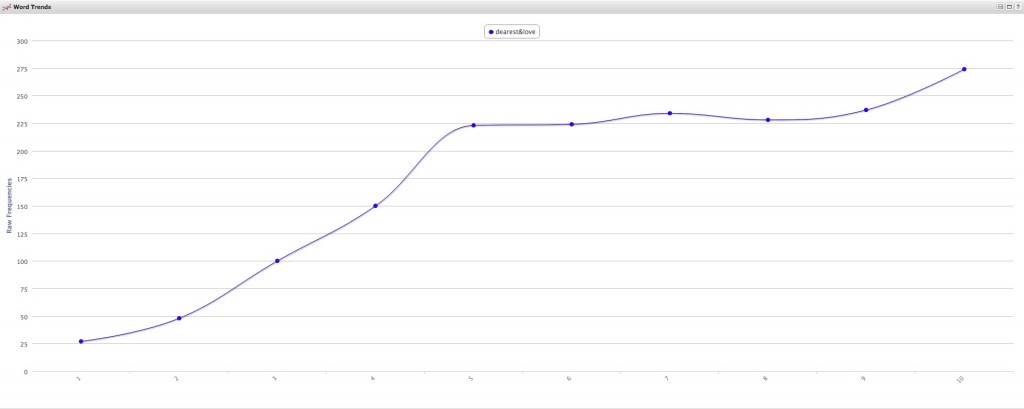Robert Browning and Elizabeth Barrett Browning were Victorian poets. The Armstrong Browning Library here at Baylor University, in conjunction with Wellesley College, Balliol College at Oxford University, The Harry Ransom Center at the University of Texas at Austin, and Ohio State University, created an unparalleled collection of their correspondence. It is available digitally as part of the Baylor Digital Collections.

Since full-text of all the love letters is available, we decided to text mine them to see if we could learn anything more about the correspondence through digital means. What we discovered was, in turn: interesting, staggering, and heart warming.
Let’s start with the interesting. After filtering out stop words (words like “is”, “and”, “the”, “at”, etc.) we found that the Browning’s top five most used words were:
- Say
- Shall
- Think
- Know
- Dearest
Next, let’s look at the staggering. In their 574 letters, the Browning’s wrote 400,813 words to each other. Over the course of under 2 years that’s a really impressive amount of things to say! And it makes me feel a little guilty about the brevity of the text messages that form the basis of my romantic life.
Finally, let’s look at the heartwarming. By tracking the poets’ usage of the word “dearest” over the course of all the letters we can see the relationship get more serious over time.
Ultimately, I felt like text mining the letters gave me an interesting glimpse into the Browning’s love story. Certainly, you can read the letters and see the growing affection, but they were both brilliant people and their letters discuss a lot of topics. The text mining offered a more distilled view of the letters, which I found really helpful. Graphing a love story doesn’t sound terribly romantic at first, but now I really think it might be. Through text mining and graphing, it seems we are able to really clearly see these two people fall in love.
Notes on the Digital Scholarship
- All the text mining for this project was done with Voyant. Here’s a tutorial for that tool.
- The text we used was a published version of the love letters, now in the public domain and available digitally through Project Gutenberg
- If you’d like to explore the letters further, this link has the text pre-loaded into the Voyant interface.



